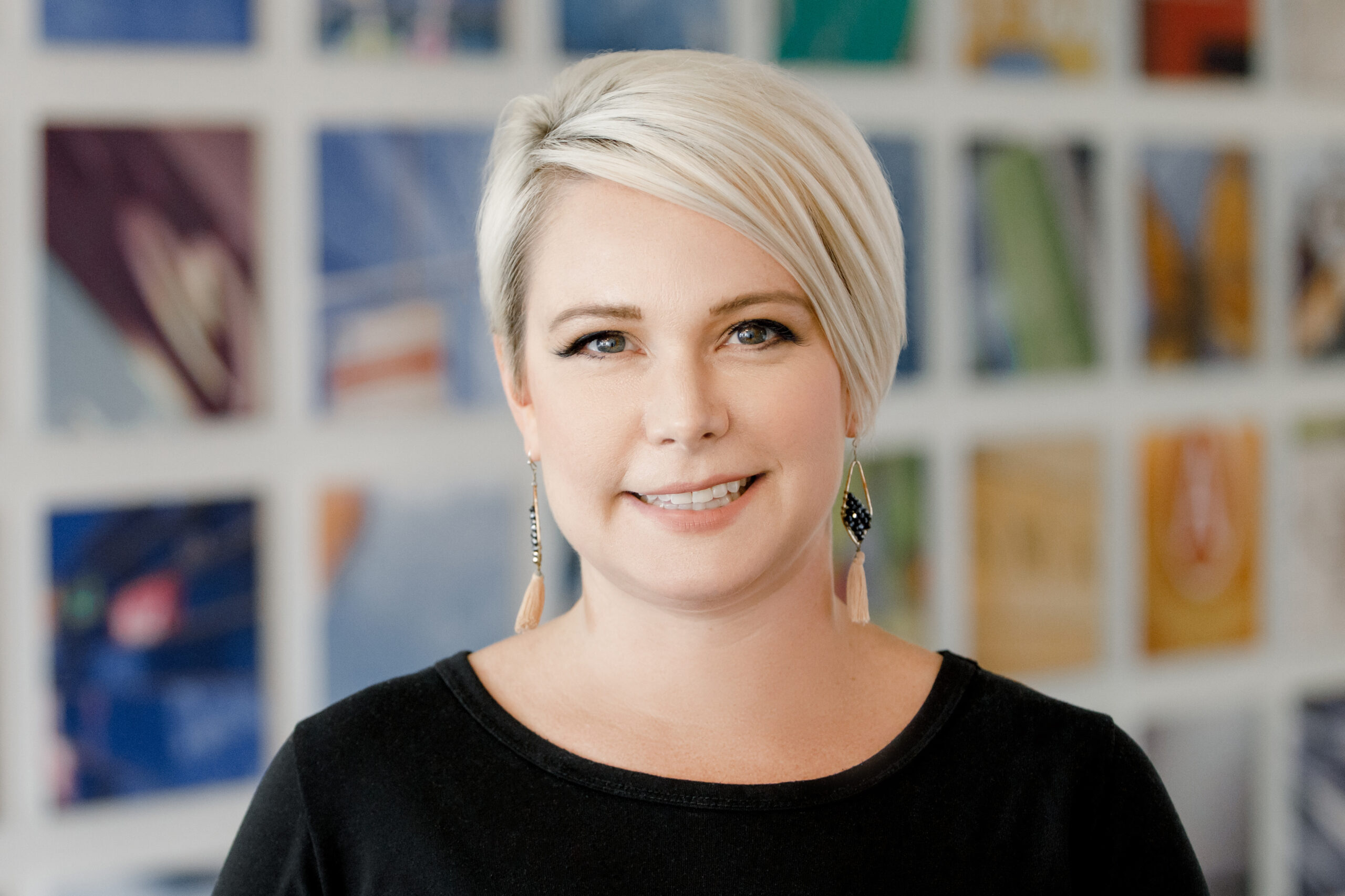Our team is comprised of unique, multidisciplinary individuals with extraordinary talent who work together to deliver exceptional results for our clients. For over 30 years, we’ve honed our craft, been agile in our approach as the way we work changes, and put our own methodologies into practice in the Kolar office.
Hannah Anderson is a construction administration lead with Kolar. Her primary focus is to oversee artwork detailing and production, fabrication, and installation activities. Her balance of thorough and creative thought processes allows her to provide coaching and identify opportunities within each project team to achieve desired outcomes for quality, performance, and effectiveness throughout design development.
Today, we’ll get Hannah’s perspective, as she dives into the importance of a well-planned, designed, and executed built environment, its impact on workplace wellness, and the dynamic of the Kolar team.
How does workplace wellness impact branded environments?
The same question could be asked in the other direction – how do branded environments impact workplace wellness? It is, perhaps, easier for us to conceive and accept the notion that providing a well-planned, designed, and executed space will have a positive impact on workplace wellness (the overall wellbeing of staff and visitors).
We spend so much time in our place of work, and each organization or job available asks for a varying degree of stressor tolerance from the employee. Those stressors could be physical, psychological, or even social. Beyond any internal operations change, I would suggest that an organization willing to put their effort and resources into improving workplace wellness will eventually come to discover that providing a well-planned, designed, and executed space is one of the biggest change-making decisions they can provide. Those planned and designed spaces (the branded environment) will be the result of many choices made while listening to all levels of the organization and understanding what wellbeing means to those who use and visit the space.
What is the new way of working and how has it changed companies’ cultures?
The topic I hear discussed the most is in response to all of the hybrid and all-remote work situations within companies that used to require their employees to work in-person, in a shared location, when it wasn’t always necessary. I cannot speak to any percentage trend in this direction over the last decade or even the last 5 years, but I can say that the global pandemic’s impact in 2020 was the strongest catalyst for change in recent history. I can’t tell you how many times I’ve heard other professionals explain that being forced to work remotely for an extended period proved a few things to their company. Taking a closer watch of company technology and security was increasingly important, ensuring that resources and support were available to employees working remotely, learning which roles or job functions could perform just as well (if not better) away from a shared office building, and also learning how to communicate more effectively with others who are no longer in your physical proximity. I’ve heard workers who were always remote or at home share that they felt more included and equal to their team once each person was remote.
Even organizations that could not send all of their employees and staff remote, those providing emergency services or frontline staff, caregivers, teachers, certain retail and goods suppliers, mailing and distribution workers, etc. all of those organizations learned a great deal about adapting to a different culture, with different demands almost overnight. Work is also being done to make change within the spaces that those employees perhaps never left. Every single one of these employees could tell you how their job is different from years past and their physical place of work needs to adapt to these changes.
How do you think Kolar is impacting workplace wellness?
Externally, Kolar is working very closely with clients to assess their unseen needs within an organizational structure or culture. Part of this discovery work is built into our everyday planning and design processes. Other times, we are looking much more analytically and data-driven through a special (KEI) Kolar Experience Institute™ process.
Internally, Kolar strives to “practice what we preach” and benefit from those change-making activities uncovered along the way. The pandemic has slowed the pace of some things, but a future office renovation and updated technology is imminent. Hybrid work options are now policy for the company, which gives each employee a choice in where they report to work from on specific days. What started as a public health regulation has evolved into a wellness benefit. The company continues to implement quarterly peer-to-manager sessions to track the ongoing goals and achievements of each employee and to be accountable for each employee’s success. We also have an employee-led Wellness Team that plans and executes culture-building activities and offerings around a shared set of values.
What inspires you most as a leader at Kolar?
The collective intellect from this group of individuals is inspiring. That statement has never waned over my years here, even as particular faces arrive and exit. There is something about this organization that expects great work, empowers great work, and delivers great work. If you aren’t in the business, it’s very hard for me to explain how much of the “great” that we deliver is unseen. It’s all within our brain power and ability to empathize or internalize.
Has anything you learned through your experience at Kolar surprised you?
I honestly don’t know! This is no longer a surprise, but very early on when I joined I was surprised at how quickly I received open doors and opportunities, both in terms of my work responsibilities and in terms of professional development.
Where do you envision Kolar in the next ten years?
Continuing to be gangbusters busy, like we do! Growth of the company size and influence is the current plan, so I’ll be interested to find out just how “big” that can be through all our efforts.

